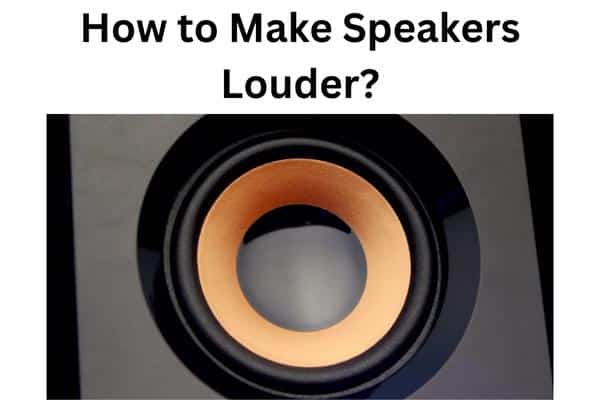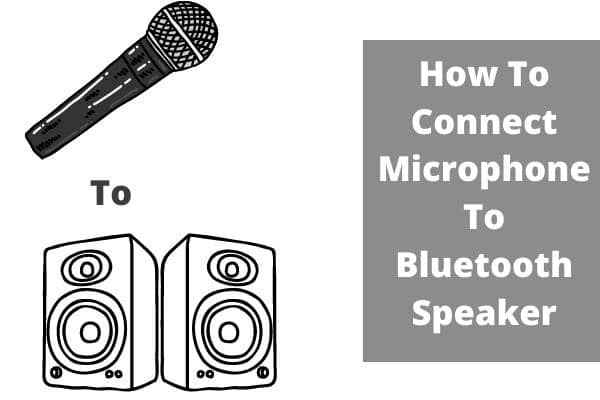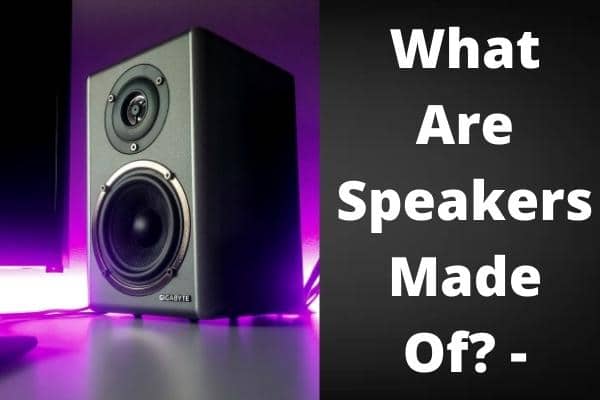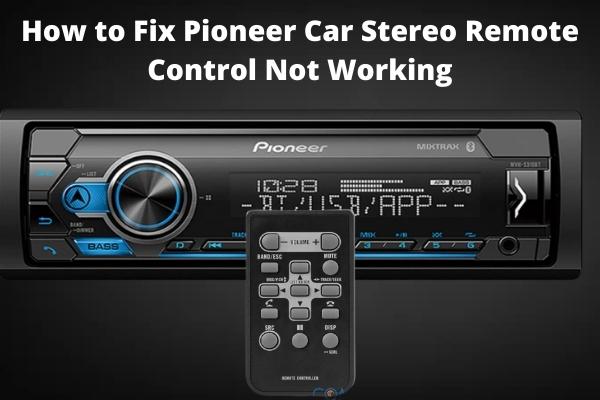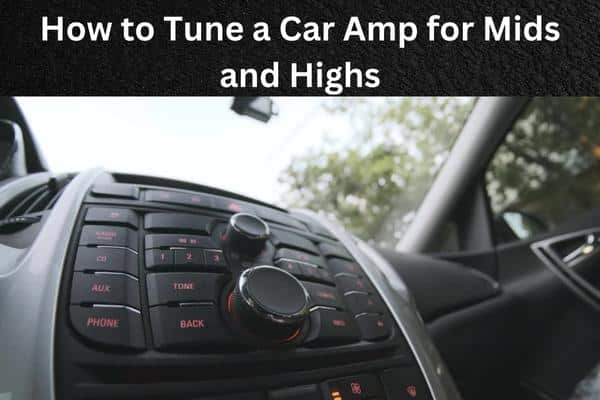
The most important components of your car audio system are your speakers and amp. If you want the best sound out of your car audio, the trick is to tune both the amp and the speakers to fit together seamlessly, providing an optimal listening experience that makes your music come alive.
The goal of car amp tuning is to get it as close as possible to natural, flat frequency response. To do this, you will need an equalizer. I recommend experimenting with different settings on the EQ until you find one that satisfies your personal preference. It is best if you can find someone who knows how to use an equalizer so they can help you reach your goal, but it may take some time before you figure out what sounds good to you.
Here, you will learn how to tune a car amp for mids and highs, ensuring you hear all the details in your music that make it so beautiful!
Understanding Mids
Mids are frequencies that are evenly spaced in the middle of the human hearing range. They typically fall between 300 Hz and 3,200 Hz.
The term was originally coined in relation to professional audio systems but is now used in most applications where signals in those frequency ranges need to be preserved or emphasized, as with video games, VOIP applications like Skype, or unbalanced stereo recording channels.
In a car amplifier installation, tuning your amp for mids and highs can mean adjusting its tone knob and other parameters like high-pass filter cutoff points on speaker-wire taps.
Understanding Highs
The highs are sounds that have a frequency of 2,000 Hz or higher. For instance, the sound of a cymbal, a trumpet, or the voice of someone singing high notes.
In terms of amplifiers, you cannot be too harsh on them when trying to get mids and highs, as they can cause your ears much discomfort if you overdo it.
But that does not mean they do not play a critical role in sound production either.
Understanding Lows
Lows are the deep, low-frequency sound waves that give your music its booming richness. In other words, the heavy bass line from hip hop. If you want people to get down on their bad selves, you need to beef up those lows!
Many prefer aftermarket car audio systems because they deliver better low-end frequencies than factory systems.
Many manufacturers know this preference, so they market their cars as specifically designed for these sounds with features like satellite speakers in the backseat, subwoofers in the trunk, and 12-inch woofers under the hood.
How to Tune a Car Amp for Mids and Highs [STEPS]
For those looking to get the perfect sound out of their car amp, below are some steps you can take. First, find a quiet spot away from any ambient noise where you will not be disturbed, and then follow these steps to know how to tune your car amp for mids and highs!
Step 1: Adjust Gain Control

Turn the Gain Control knob counterclockwise, then gradually adjust it clockwise until you hear distortion on any volume level.
The amp is at full volume when there is no distortion. Keep turning the knob clockwise until you hear distortion again.
Then turn it back counterclockwise, so it distorts at a lower volume than last. You have now found your sweet spot where you get good sound quality without distortion.
Repeat this process of adjusting the knob in both directions for each frequency range you want to fine-tune.
Step 2: Bass EQ (Boost)

Bass EQ settings are crucial in the tuning process. It can be set with a boost or cut to your bass EQ settings.
The settings for mids and highs will differ depending on your system. When tuning so you do not overdo it when boosting certain frequencies.
Remember, everyone’s speakers are different, so not every car amp needs the same EQ treatment.
If you are experiencing a muffled sound, turn up the high-frequency range. If you are noticing an echo, turn down low-frequency ranges until the echo is gone.
Use trial and error to find the right balance between frequencies and see what sounds best to you.
One way to test how well your music sounds before taking your car out for a drive is by blasting music through your speakers and adjusting EQ as needed.
Step 3: Mid Tone Control Section
The mid-tone control section of the amp is responsible for, not surprisingly, adjusting the mids. It does this by changing the bass level.
Depending on what style of music you are listening to, a high or low-frequency range may be too prominent.
Try turning the mid-tone control from 12 o’clock (an even mix) up one notch at a time until you find the spot that sounds best for your situation.
If you are looking at a response curve on an amp with a sweepable mids band, try moving that frequency in different increments up and down until you find one that feels natural or which sounds like it fits your needs best.
The higher frequencies will affect the treble levels and vice versa, so if you adjust one, you should do so gradually.
You will know when you have found a good spot because it will sound right to your ears.
Step 4: Treble EQ (Cut)

Cutting is the process of reducing the signal’s strength by boosting the signal’s noise. It sounds counterintuitive, but it is necessary.
For treble frequencies, in particular, too much energy can cause things to be over-emphasized and sound harsh. However, insufficient cutting could leave your highs sounding fuzzy and lacking definition.
The key is finding a balance where you are using your EQ cut slider enough to hear a difference but not so much that you are removing frequencies from your desired sound signature altogether.
Play around with different volume levels and find what sounds best to you!
Step 5: Fine-Tune
Now you can fine-tune your car amp for mids and highs.
For the midrange speakers, you will want to adjust only one at a time to find its peak volume level, then move it closer or farther away from the microphone in incremental steps (you can use a tape measure) until you hear distortion.
Adjust either sideband, positive or negative voltage level trim pots one position at a time until you are as close as possible without distortion.
Conclusion
So, now you know how to tune your car amp for mids and highs. When done correctly, it can sound incredible.
No matter what kind of system you are trying to get an extra boost from, remember these tips so that you do not have any problems with tuning in the future.
You can adjust the bass or high-end frequency levels to perfect your sounds in minutes!
Frequently Asked Questions
What Frequency Are Mids and Highs?
The frequencies we hear most often, or what people call the visible spectrum, are between 20 Hz (bass) and 20,000 Hz (treble). It is because, in many ways, human hearing follows a visual perception. Lower frequencies are slower waves that take longer to travel through space, while higher frequencies are faster waves that take less time.
How Do You Set a 4-Channel Amp for Mids and Highs?
To tune your car amp for mids and highs, you must first set the amp’s gains. It is done by adjusting the volume knob on the amp from zero (far left) up to max volume. Next, measure the voltage from each channel of your amplifier – that’s how loud it goes into a speaker. Please note which channels are louder than others and adjust them using the variable resistor (the pot) on that channel.
What Should Midrange Be Set to in a Car?
Every car will be different, but the midrange control should be set as high as possible without overdriving the signal. To verify you are in the right range, increase the volume of your stereo. If you can hear any distortion, your amp may need to be re-tuned.
How Do I Tune My HPF to My Amp?
The first step is knowing what frequency you want to cut. To find the fundamental frequency of your speaker, divide the speaker’s resonance number by two. For example, if the speaker has a resonant frequency of 16.5KHz, its fundamental frequency is 8.25KHz. Once you know this number, subtract 2x this number from 500KHz and tune your HPF at 500-2x(500-16000)= 391KHz.

